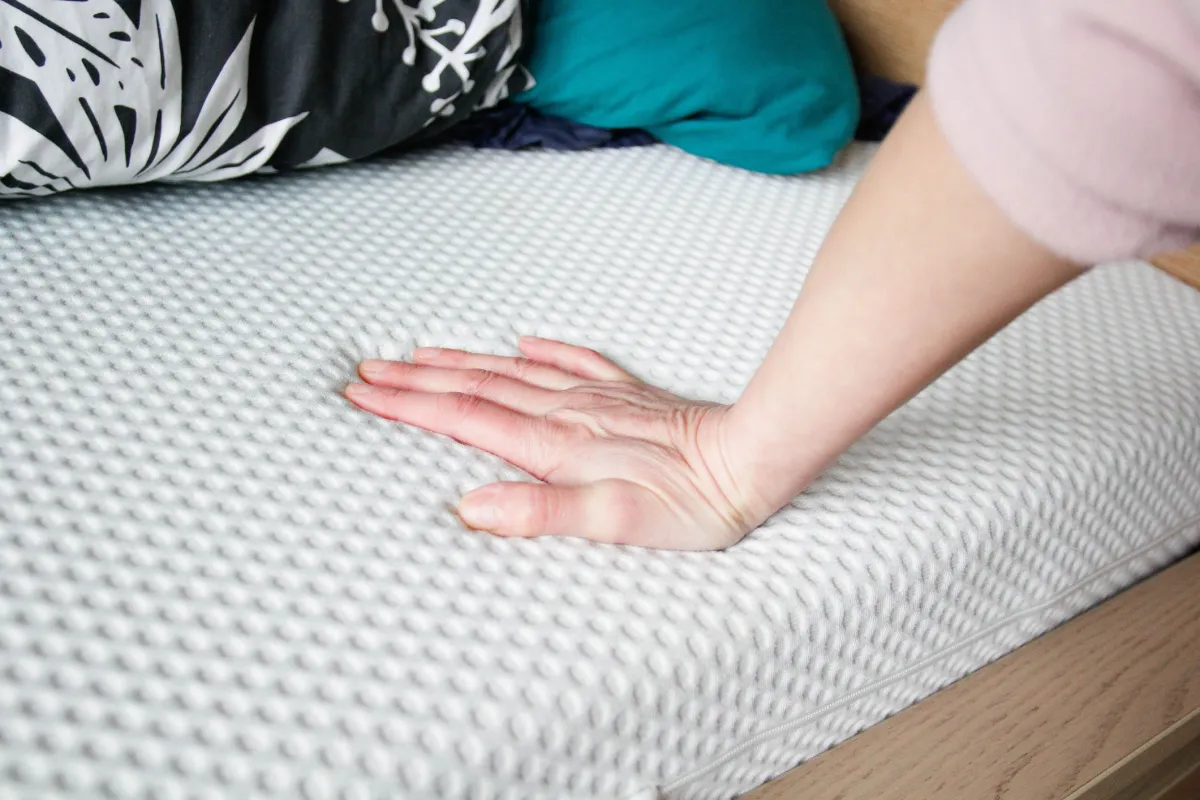

We may earn revenue from the products available on this page and participate in affiliate programs. Learn More ›
When buying new furniture, the adage that you “get what you pay for” is true, says Jennifer Prince, owner and reseller at it’s FOUND vintage. Poor-quality pieces can end up costing more in the long run if they need repair or replacement, so it’s worth taking the time to carefully examine furniture before making a purchase. Unfortunately, there’s a fair amount of poorly built furniture in stores and online, and it’s not always obvious at first glance whether an item is constructed well enough to stand the test of time.
As a knowledgeable consumer, you can learn to understand clues to look for when assessing whether a desk or sofa is built well and worth the investment. Below are several warnings when shopping for new furniture for your home to ensure that you avoid low-quality furniture. Don’t be shy about testing out the furnishings: sit on chairs and sofas, open up drawers and doors, feel fabrics, and bring your reading glasses or even a magnifying glass to see details up close.
Choose reputable stores and brands you can trust.
Before you even start looking at specific pieces of furniture, do some research to identify the brands and stores that offer high-quality products. Whether you opt for American-made furniture or venture off to stores touted by interior designers, you can be confident that the items you take home are robust. Furniture made in America, for example, adheres to stricter manufacturing and safety standards than pieces built in many other countries.
It’s also valuable to read reviews from reputable sources and ask for recommendations about the best brands and stores that people love. Focus on customer ratings for verified purchases to ensure the reviewer actually owns that kitchen table or rocking chair. This is particularly helpful if ordering online, since you won’t be able to examine the items in person.
Avoid veneers.
A veneer is a thin layer of wood, usually about 3 millimeters (mm) thick, that is used to coat lower quality wood and make the piece look more appealing; it’s a big red flag. Wood with a veneer layer is less durable and can splinter easily. The worst type of veneer is a wood laminate, which is a layer of paper or plastic that has a reproduction of wood grain printed on it and is then glued on top of cheap materials, such as particle board.
“Look carefully at the materials that make up the piece,” says Prince. “Typically, buying furniture that is 100-percent wood—as opposed to laminate, veneer, or particle board—is an earmark of quality. A solid wood piece can generally withstand more wear and tear, especially if it gets wet, whereas particle board pieces can swell in humidity, and veneers can chip or split.”
How can you spot a veneer? Giveaways include wood grain that is inconsistent, doesn’t match up, or doesn’t go all the way through in the same direction; wood on the bottom and back that doesn’t match the rest of the piece; cracks or splinters in the wood; drawers with false fronts; and drawers that don’t fit snugly or don’t open and close easily.

Feel the foam density.
When shopping for upholstered furniture, it’s imperative to test it out for comfort and check the foam density. “When it comes to cushions, higher quality pieces will have a firm foam wrapped in padding or down material, protective inner covers, and reversible cushions,” notes Sarah Hargrave, owner and principal designer of The Collective Dallas.
“If you are able to, sit in the piece and make sure it is comfortable and not too stiff,” says Hargrave. “Stiff or sagging cushions could indicate that the fill materials used are not high quality,” she says. Even unzip the outer covers to make sure that the foam block on the inside is thick and covered with fiber.
Check the joints.
The way in which pieces of wood are held together—by joints—indicates quality. Don’t hesitate to ask the salesperson about the type of joint used. Prince recommends consumers inspect the joints to see the sturdiness of their construction. “For example, dovetailing is a sign of sturdiness, whereas nailed-together furniture can’t bear as much weight,” she explains.
Stay away from furniture with joints that are glued, stapled, nailed, or screwed together. The furniture can fall apart easily if constructed in this way. On the other hand, doweled or dovetailed joints are more stable and durable. They require more precision when fitting different pieces of wood together seamlessly.

Make sure it is sturdy.
There’s nothing more annoying than a wobbly table or chair. Before you order any furnishings, confirm that they are hardy and sturdy. Try out the item to make sure it feels solid, doesn’t creak, and doesn’t wobble, or check online reviews for that information. Some positive attributes include drawers that glide easily, legs made of solid wood that are not glued or nailed on, or stretchers (pieces of wood connecting two legs near the floor to add strength). Another sign is when the arm and leg or back and leg of a chair are made out of a continuous piece of wood.
Choose high-quality fabrics.
Fabrics also can affect the condition of furnishings. Choose tightly woven fabric with a high thread count that fits snugly around the frame and padding. Look for straight seams and welting and cushions with zippers. Watch out for materials that pill easily when rubbed, lining that shows through the fabric, prints that come off or fade, and patterns that don’t line up and match at the seams.
“For upholstered pieces, make sure that the pattern is aligned properly and that skirted pieces have lining,” says Hargrave. “Check with the manufacturer on the details of the fabric; performance fabric is ideal for most homes” she says.
Inspect the finish.
Check the finish of the piece for scratches, dings, and cracks, suggests Hargrave. “Cracks could indicate that the piece was not constructed properly and could get worse over time. Run your hands over the finish of the piece to ensure that it is smooth.” Some experts also suggest drawing a line with your fingernail on the surface to see if the finish stays intact. Look for streaks, bubbles, discoloration, or unevenness in the finish. This is especially important for tables, desks, and dressers that have items placed on them all the time.
